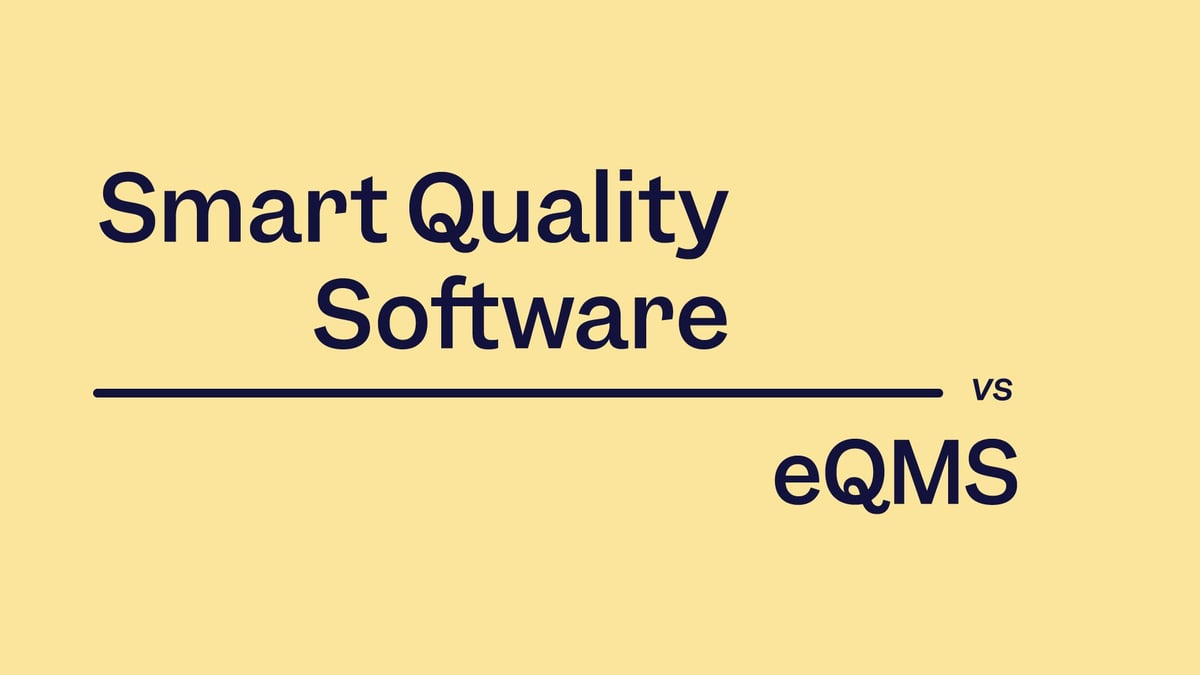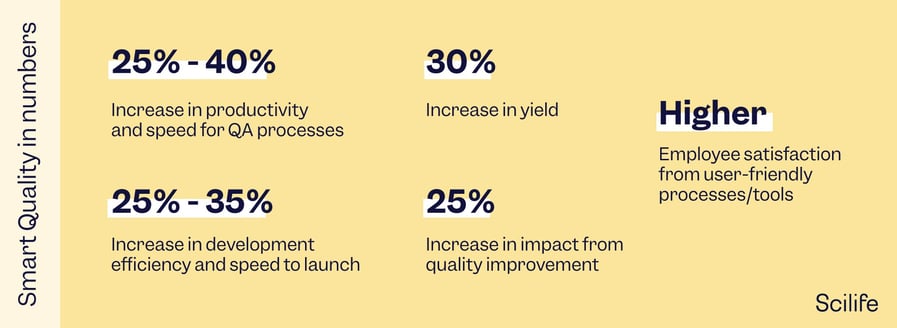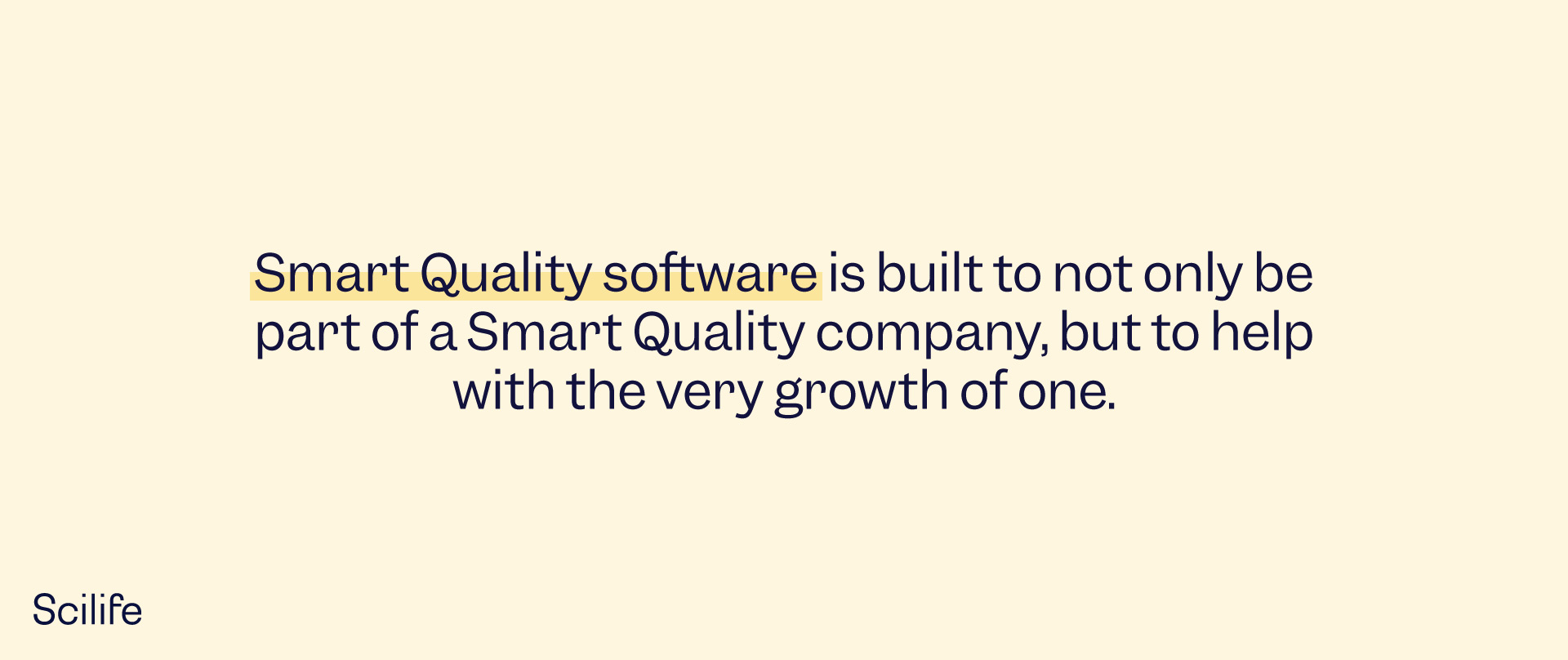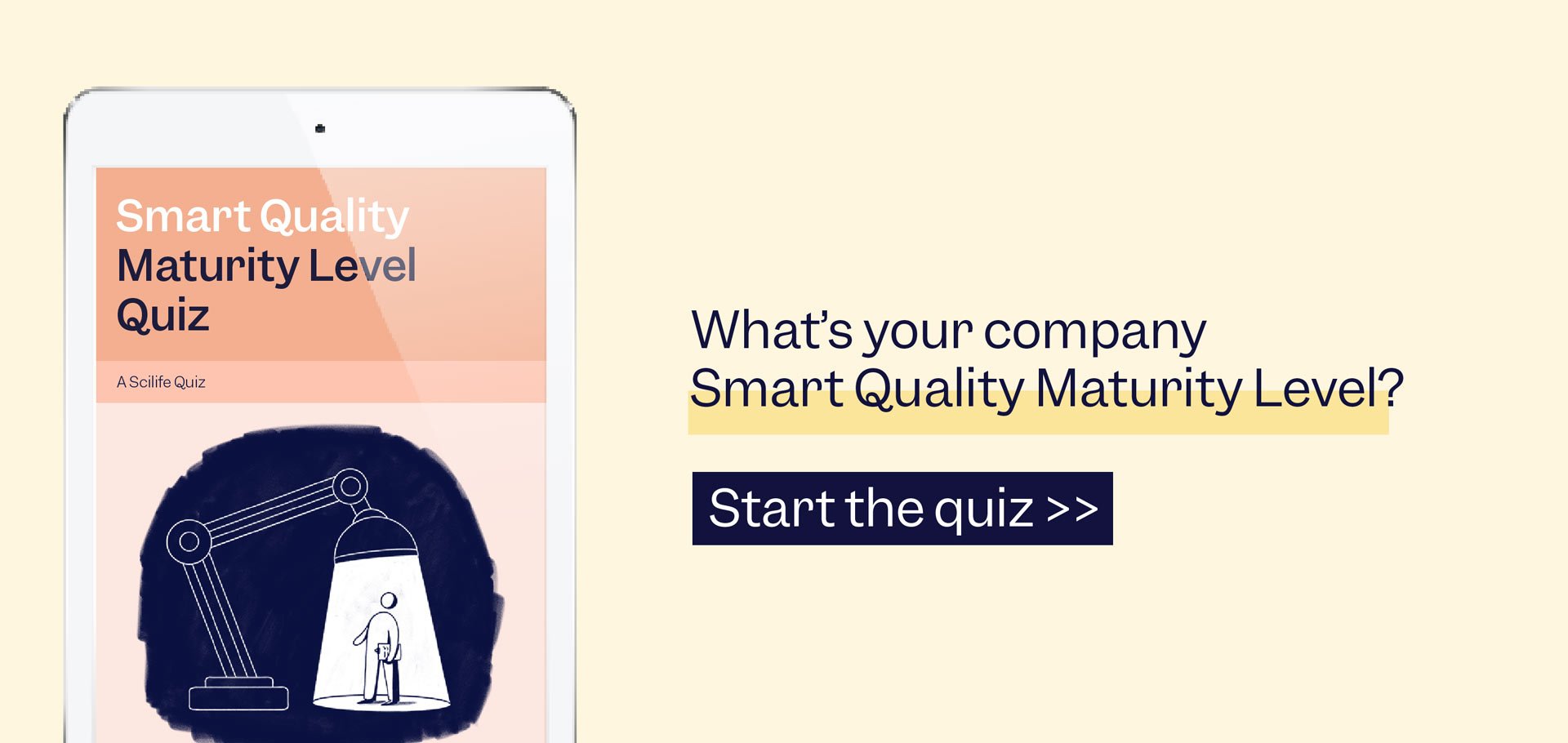
Today, the Quality conversation is no longer about making the digital leap from an outdated paper-based Quality Management System (a traditional QMS) to managing your Quality processes with electronic Quality Management software (an eQMS).
That transition has now been made by every major player in Pharma and Medtech, and is no longer of any real relevance.
Instead, the rapid evolution of Quality Management has gone a step further.
Nowadays, the frontrunners in the field are in a rush to switch to a new and more powerful type of software you too may already have heard of; Smart Quality Software.
What exactly is Smart Quality Software, what does it achieve, and how is it better than your everyday eQMS?
Smart Quality: The Concept
The Smart Quality concept was introduced by McKinsey early last year and began making real waves in both the QA community and the Life Sciences industry as a whole shortly after.
Heralded as a ‘revolution’ in Quality management, the Smart approach was radically inclusive - promising to infuse Quality ownership into everyone’s everyday tasks throughout the entire company, rather than offloading it into the hands of a siloed QA department.
Compliance, responsibility, and continuous improvement would effortlessly become an integral part of a company’s makeup and normal way of doing things - and catalyze massive value.
Read: Smart Quality is here, and Quality management will never be the same
Smart Quality Software
Since the launch of Smart Quality Software, the Smart Quality approach has really taken off in the Life Sciences sector, and it’s paid huge dividends for companies, employees, and patients alike.

Why does Smart Quality Software have such a big impact?
Mainly, through encouraging Quality ownership within all levels of the company. Ownership in the sense of self-adopted responsibility rather than an obligation. That boosts productivity, minimizes mistakes, and helps employee satisfaction. Consequently, that skyrockets yield, speed to market, developmental efficiency, and Quality impact. In short; when more people understand the importance of Quality and are empowered to embrace it within their own day-to-day tasks, everything gets better!
So, how does Smart Quality Software achieve this?
In essence, through sparking a mind-shift in how Quality is perceived and its potential, as well as improved accessibility to operating in a Quality-centric way. That Quality mind shift is encouraged by the software’s behavioral design to make incorporating Quality more rewarding and easier (such as through elements including gamification, benchmarking and UX), inbuilt learning resources to make users feel more connected to the ‘why’ of their actions, and intelligent data reports that help users understand the goal and impact of their actions.
What then sets ’Smart’ Quality software apart from standard Quality software (a regular eQMS)?
Spot the Difference:
Smart Quality Software vs. eQMS
Smart Quality Software is much, much more than an eQMS! That doesn’t simply mean it’s an ‘advanced’ eQMS, or has a bunch of cool added features, or has a slick UX.
It means that the concept of Smart Quality is baked into the entire platform, from top to bottom.
Not only is the software itself ‘Smart’ in the way it looks and operates, but it’s specifically engineered to help its users become more attuned with Quality.

The easiest way to spot the difference between your run-of-the-mill eQMS and true Smart Quality Software is not only through a checklist, which we’ll get to, but to understand the differences in the goal of the software and the vision of the software provider.
The goal of an eQMS is to help organizations formalize a streamlined digital system that documents and controls their processes, so they can produce safe and effective products that meet customer requirements and regulatory standards. A secondary goal is often to reduce the costs of doing so, and Quality can be managed from anywhere thanks to cloud-based accessibility.
The goal of Smart Quality Software is to catalyze value and fuel a Smart Quality mind-shift. It aims to exceed customer expectations, to empower company-wide ownership of Quality rather than just accessibility, and to nurture continuous learning through educational materials and gamification. It leverages data to act predictively rather than reactively.
With such a plethora of solutions and providers out there, branding themselves as an eQMS, Quality Platform, and beyond; it can get a bit confusing which software actually does what.
To help you spot the difference, use this checklist to distinguish whether the Quality software you’re looking at actually falls into the eQMS category or is truly Smart Quality Software.
Checklist: eQMS or Smart Quality Software?
eQMS software
-
- Cloud-based software where all Quality processes are managed digitally from one easily accessible central platform
- Can be general or designed for highly specific business scenarios or industries
- Automates and streamlines Quality management processes such as document control, change control, employee training, supplier management, non-conformance/deviations, CAPAs, customer complaints and audits
- Makes document sign-off possible using electronic signatures
- Generates automatic data reports
- Tracks and logs actions on the platform to help trace accountability
- Tracks Quality events, such as non-conformances, customer complaints, audit findings, and CAPAs
- Helps ensure compliance with regulations
- Controls document versioning
- Allows setting of basic user roles and permissions
Smart Quality Software
-
- All the Quality tools you would expect from an eQMS, but demonstrably more advanced beyond basic Quality management
- Leverages intelligent (often real-time) data analysis to highlight predictive data insights such as future KPI trends, customer needs, goal tracking, industry performance comparisons, and more.
- Detailed visual data and custom reports
- Emphasis on continuous learning, including educational resources such as articles, guides, videos, or other embedded elements like quizzes.
- Gamification elements that encourage the completion of tasks
- Ability to clearly catalyze value beyond compliance - typically reducing product time to market, increasing productivity or yield, saving resources, boosting release cycle times, or improving customer satisfaction.
- All processes are intuitively digitally connected
- Compliance with FDA, ISO, and GxP requirements is baked in
Finding the right fit
Now that you’re equipped to tell the difference between Smart Quality Software and an eQMS, the next step is to figure out which is right for your organization.
Typically, when you consider eQMS providers it’s important to first consider the size of your company, budget, use requirements, and growth potential. When it comes to choosing between an eQMS and Smart Quality Software, however, the primary consideration is to evaluate your company goals and ambitions.
Is passing audits and meeting customer expectations enough? Is the overarching aim to simply get everything digital, organized and streamlined? Or is your company ready to step up, reach beyond compliance and reap the rewards of turning ‘Smart’?
If the answer is yes to the last question - it’s clear that Smart Quality Software should be on your radar!
Remember, simply purchasing Smart Quality Software won’t magically transform your organization overnight. Your organization and employees must be ready for the change. Nevertheless, implementing Smart Quality Software is an essential first step in the journey to transforming into a Smart Quality company.
Ready to switch on the Smart Quality light in your company? Discover how Scilife smart QMS can help you.





